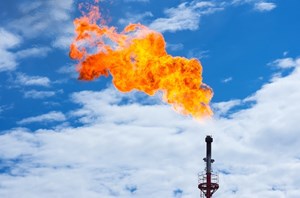October 2020 Vol. 75 No. 10
Washington Watch
EPA Eliminates Methane Emission Restrictions for Pipelines
Stephen Barlas | Washington Editor
The new Environmental Protection Agency (EPA) rule, freeing interstate pipelines from Obama-era rules that set volatile organic chemical (VOC) and methane emission restrictions, is headed for a federal court date. Environmentalists had already filed one lawsuit regarding EPA methane rules prior to this final rule being issued and will now file additional lawsuits, according to Fred Krupp, president of the Environmental Defense Fund.
At issue are two rules from the Obama administration, now canceled by the Trump administration. The first, in 2012, included transmission pipelines in the oil and gas category with regard to New Source Performance Standards (NSPS) for the first time. That made the pipelines subject to VOC emissions limits, which mostly affected pneumatic controllers, centrifugal and reciprocating compressors, and storage vessels. The second, in 2016, specifically added methane emission/leak provisions to the entire oil and gas category.
It is not clear whether the upcoming legal action will focus on inclusion of pipelines in the oil and gas category or the addition of methane to the category in 2016, or both.
An attorney for the EDF did not respond to an e-mail asking about the group’s intentions. Neither did a Washington attorney who represented the EDF and a number of states in a lawsuit filed on July 3, before the final rule was issued Aug. 18, asking the federal court in Washington, D.C. to force the EPA to issue a rule on methane.
In addition to upcoming court cases, the EPA rule could also be overturned by Congress under the Congressional Review Act. That would only happen, however, if both the House and Senate are captured by Democrats in the 2020 election.
The EPA final rule on transmission pipelines and then methane was in response to President Trump’s March 2017 executive order on Promoting Energy Independence and Economic Growth. It instructed federal agencies to review their rules and determine if there is an “unduly burden on the development of domestic energy resources, beyond the degree necessary to protect the public interest or otherwise comply with the law.”
The addition of methane in 2016 to emission reduction requirements has been the biggest concern of both the transmission pipeline and gas production sectors. The Interstate Natural Gas Association of America (INGAA), in a 2019 letter to the EPA, said: “INGAA’s members are concerned about methane emissions and the lack of predictability on this issue.” ‘”Lack of predictability” referred to questions about whether the 2016 Obama final rule would be reversed by the Trump administration.
In addition, INGAA noted that its members had taken voluntary steps to reduce methane emissions. “More specifically, members of INGAA will:
- Install air-driven, low-bleed or intermittent pneumatic controllers when installing new pneumatic controllers, unless a different device is required for safe operations.
- Minimize emissions during maintenance, repair and replacement of pipelines.
- Replace rod packing on all transmission and storage reciprocating compressors.
- Conduct leak surveys at all member-owned and operated transmission, and transmission and storage, compressor stations by 2022, and at all natural gas storage wells owned and operated by INGAA member companies by 2025.
- Transparently report methane emissions.”
In welcoming the August 2020 final rule, the American Petroleum Institute (API) made the same point about methane reductions over the past decade. It said methane emission rates from five of the largest producing regions across the U.S. have fallen more than 60 percent from 2011 to 2018 – even as production in those regions has increased dramatically. The production industry’s drive to lower VOC emissions, which remains required under the Oil & Gas NSPS, results in those emissions reductions.
“The Trump administration’s attempt to eliminate these sensible methane standards is fundamentally flawed,” said Krupp in a statement. “Like so many other administration rollbacks that have already been rejected by the courts, this one ignores the science, the public health impacts and the low-cost solutions we have at hand. These sensible pollution controls have been working to protect Americans since 2016. Investors, states, community groups and even leading oil and gas producers have all called on the EPA to retain and strengthen methane safeguards. The administration has no scientific or public health basis for taking this action, and EDF will forcefully oppose it in court.”
In eliminating transmission pipelines from the oil and gas category, the EPA looked back to a 1971 “listing” by the EPA of the sectors in the oil and gas category. That listing did not explicitly include transmission pipelines. The Obama administration, in 2012, in effect interpreted the 1971 listing as being broad enough to include pipelines, even though they were not explicitly included. The August 2020 final EPA rule said the oil and gas sector rule was wrong in 2012 because the Obama administration did not meet a statutory requirement to determine whether pipeline emissions contribute significantly to the endangerment of public health or welfare.
The EPA did make an affirmative, “significant contribution and endangerment” analysis regarding methane in 2016, which the August 2020 final rule said was erroneous because it included transmission emissions and lacked an “intelligible standard or threshold for determining when an air pollutant contributes significantly to dangerous air pollution.” •





Comments